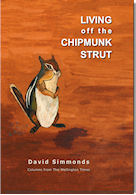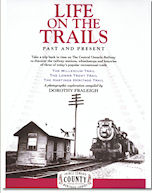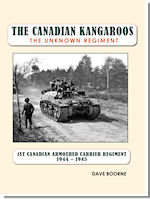Book Publishing
We Can Put You Into Print!
We believe everyone has a story to tell. But, while writers dream of sharing their thoughts with friends, family and a wider audience, most feel intimidated by the publishing world. They think they need to print thousands of books to make their dream come true.
Here at County Magazine, we can get you into print using a range of technologies geared toward short run. A short run can be anything from 50 to 500 books which helps keep up-front costs to a minimum, and avoids having to store a large inventory of books for several years. This can be depressing.
There are two ways to publish
- Sell your manuscript to a large Canadian publishing house;
- Self-publish your own book
There are advantages and disadvantage to both.
Large Publishing House
Advantages:
- You get to lean back and let them do all the work.
- You will be connected to powerful editors and marketers and to their extensive distribution system.
- They will do all the design work, page make-up and final production – at their expense.
- In return, you will receive Royalties. This is a ‘Per Copy Sold’ price established in your contract.
Disadvantages:
- You will give up all creative control of your manuscript. They pay the bills, so they call the shots. Your cool ideas for a cover or interior layout are of no interest to them
- Their experienced editors know what sells and may ask you to do a re-write, based on their instructions. Some authors go through several re-writes before approval. There is often compensation for this process, which is why many writers who go this route hire a Literary Agent, who is skilled in creating a good contract for you
Self-Publishing
Advantages:
- The main advantage is that you retain creative control of your work. Of course designers and production people will help you, but you are the client, and you get final say in the direction of the project.
- Self-publishing is the best outlet if your story is of local interest. Many authors just want to present their story in a professional format to family and friends.
Disadvantages:
- You pay the bill. Since you are the publisher, you pay the bill for your books. This is always established in advance, through an Estimate.
- You handle the distribution. Getting your book in your hands is only the first step. You will have a few moments to revel in the glory and pat yourself on the back, then you need to make it available to buyers/readers. (See Distribution below) You will need to establish a wholesale price for booksellers and make up invoices to track your transactions.
- You handle the marketing. Usually this is fairly easy. It means you must sing your praises everywhere. Marketing splits into promotion, which is often free, and advertising, which will cost you some money. Don’t do one without the other. (See Marketing below.)
FAQs
This is like asking, “How much is a car?” The answer, of course, is: “It depends.” Is it a Hyundai compact or a Ferrari?
Format, page count and binding all affect the price.
Format: Common formats are 8.5X11, 5.5X8.5 and 6X9. For short runs, the first two are the most economical.
Page Count: The larger the book, the more it will cost. Most of our books use a 12 pt. typeface for easy reading, but this may be decreased to save money.
Binding: There are now many methods for binding books. From least expensive to most expensive, we have :
Saddlestitch: This is a magazine-type binding; two staples through the spine. Suitable for books up to about 80 pages.
Cerlux: This is a plastic comb binding, often used in cookbooks. Suitable for several hundred pages, up to about one-inch thickness.
Plastic Coil: Small holes are drilled, and the machine feeds a continuous coil through. Up to about one inch recommended.
Wir-O-Bind: This is what we used for The County Handbook. The metal wir-o clamps together at the spine.
Perfect Binding: This is the most desired, and also most expensive, of the binding systems. It is the traditional paperback/softcover book binding. Recommended for books over 1/4” to under an inch, it is a glue-based system which shaves the edge of the book, applies hot glue, and adheres the wrap-around cover. Mostly used by large publishing houses, we have one on site at County Magazine.
For large projects, we ask for 50% of the invoice to be paid when the book ‘goes to press’, and the balance 30 days after delivery.
Clean and simple are your watchwords.
Most manuscripts come to us via e-mail as Word files. Again, we stress that you comb your work thoroughly to save time and money. We ‘inhale’ this text into our page-making system.
If you feel your ‘final’ should be edited, we provide that service as well, for an extra cost.
Images (photos and sketches) should be submitted as jpegs, sent via e-mail in groups of three or four. We modify them here to make them ‘print-ready’, at no extra charge.
If you have ideas for layout and positioning, your roughs can be sent as PDF files.


We also do:
colour flyers, colour posters up to 12X18, business cards
postcards 4×6, rack cards 4×9, newsletters
and much more!
Some of our recent projects

Living off the Chipmunk Strut
5.5×8.5 format
130 pages + Cover
Cover: Full colour on card stock
Interior: Black and white on bond
Bindery: Collated, Perfect Bound, and trimmed
saddlestitched and trimmed

Life on the Trails
8.5×11 format
52 pages + Cover
Cover: Full colour on card stock
Interior: Colour on 70lb Offset. Bindery: Cerlux bound (saddle stitch available)
Bindery: Folded, collated

The Canadian Kangaroos
8.5×11 format
130pages + Cover
Cover: Full colour on card stock, UV Coating
Interior: Black interior on 70 lb Digital Britewhite Offset
Bindery: Perfect Bound
- You need to create a brief summary of your book – the kind of 2- to 4-paragraph ‘grabber’ you usually see printed on the back cover of a book.
- You also need an e-mailable image of the cover, usually a colour jpeg or pdf.
- Press releases are your next line of attack. Traditionally, newspaper people are under the gun, and like to do as little work as possible, so write it in the third person, ready for print. (In other words, don’t say, “I wrote a book …”.
- PRs should be about a page long. Open with the Summary, and write a few paragraphs about why this book might appeal to the reader. End with where the book is for sale, the selling price, and make sure you attach your cover art.
- Booksellers traditionally take 25% of the cover price – sometimes more. If you are distributing a book of local interest, say The County, some booksellers will take less cut, because they know it will move.
- Don’t restrict yourself to conventional book stores. See if you can garner interest from other high traffic areas, who handle books, souvenirs and gift items.
- Consignment vs. Straight Sale: This is a tricky business. For you, the best choice is Straight Sale.
In this case, the seller pays the invoice on the spot; or in 30 days; or when you show up to replenish his supply of books. If you have a good book of high interest, the seller may be happy with any of these three options.
Consignment Sale is also good, but requires real dedication to the paperwork. In this case, you leave, say, 5 copies with the seller, who signs a receipt. They have no dollar investment up front, but are willing to give it display space in their shop.
If you’re lucky, they will sell well, and you can take in a new batch and collect your money. If not, you need to check with them every couple of months, and collect for books that have sold.
Close attention to paperwork on a regular basis will avoid any disputes with your seller.
- Be yourself. Many writers try to be Hemingway or Mark Twain. This is a sure path to Writer’s Block. Write like you talk. Write like you think. Your own style will make your story stronger.
- Do not edit your own work. Other than fixing typos, never go over and over what you have written. You will criticize yourself, and overwork your manuscript until it’s a pile of rubble. Professional editors like Janet and I know how to clean a manuscript without damaging its content.
- Use your friends and family. Don’t keep your manuscript a secret. Share it and listen to feedback. If someone doesn’t ‘get’ what you’re saying, you have not said it clearly enough. Note that family can be helpful and encouraging, but also sometimes overly-critical, or even jealous of your accomplishment. People are people, and what people like to read is highly subjective. So don’t respond to every comment you get.
- Be comfortable with your manuscript before you decide to go to press. The proof stage is NOT the time to start re-writing. This will cost time and money, and create antagonism with your production people.
- Getting into print and telling your story is an exhilarating experience. The response by your readers is usually a heart-warming event
